Australian Tropical Rainforest Plants - Online edition
Diospyros maritima Blume

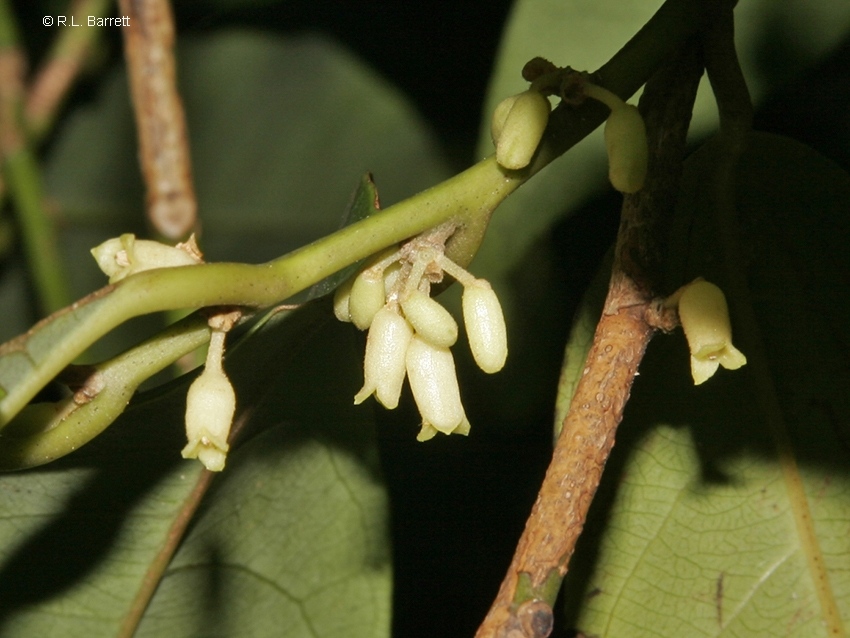

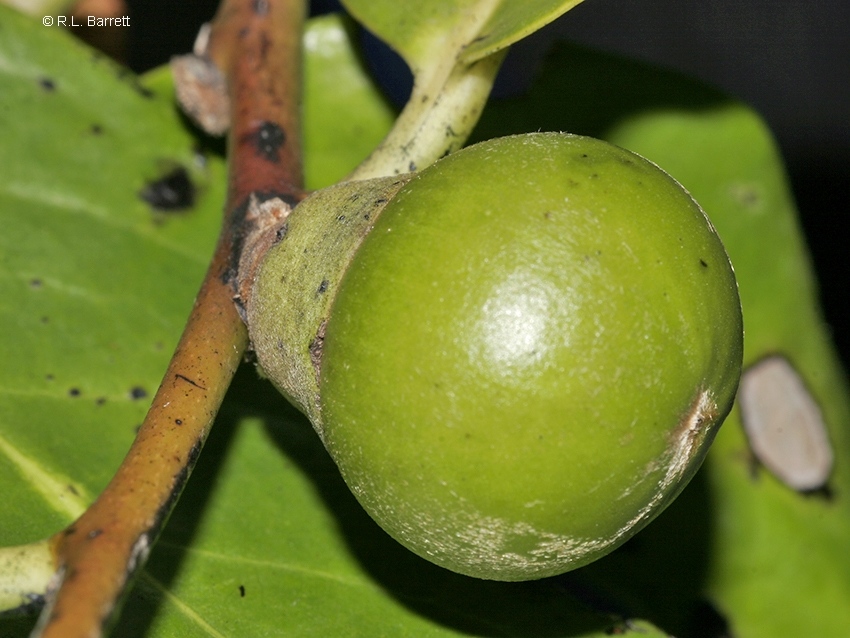


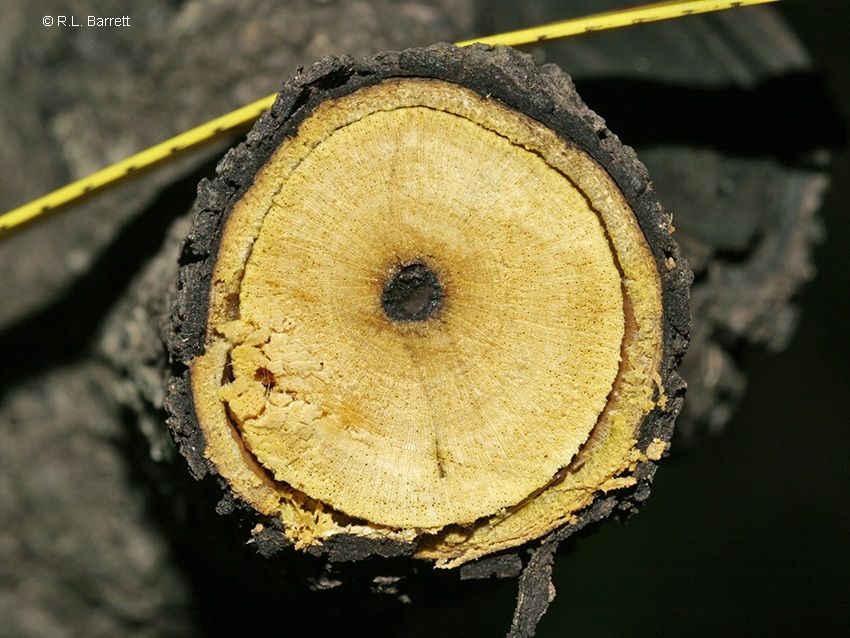
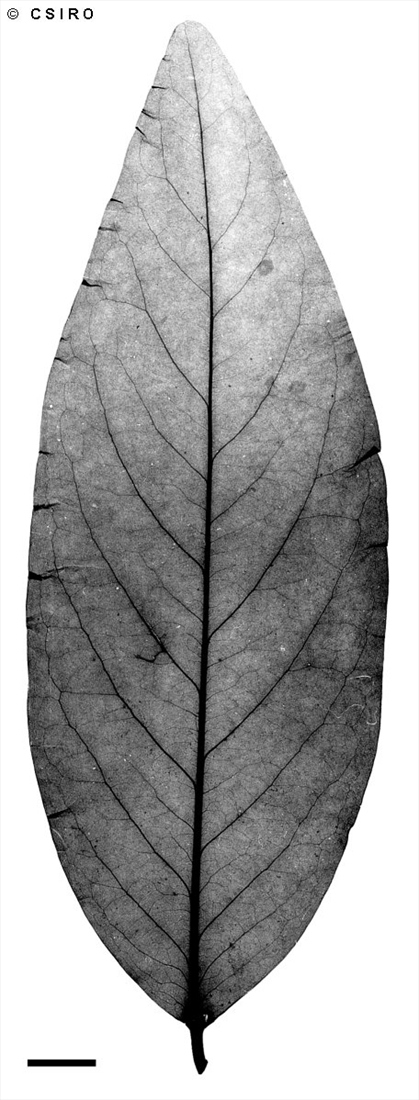
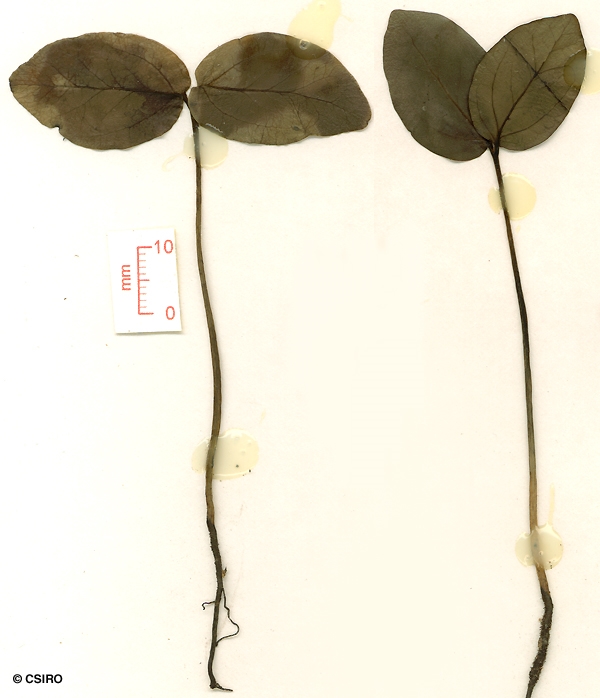
Blume, C.L. von (1827) Bijdragen tot de Flora van Nederlandsch Indie No. 7 : 669. Type: ad littora australie Javae insulae.
Ebony, Broad Leaved; Broad Leaved Ebony
Tree to 25 m. Dead bark almost black, blaze darkens markedly on exposure.
One or two large flat glands visible on the underside of the leaf blade near its junction with the petiole. Similar but smaller glands sometimes present elsewhere on the underside. Leaf blades about 5.5-30 x 2-12 cm. Midrib grooved or depressed on the upper surface. Lateral veins 7-15 pairs, curving but forming only indistinct loops inside the blade margin.
Outer surface of the calyx and corolla densely clothed in pale prostrate hairs. Male inflorescence axes up to 2 mm long, 3-8 flowers. Male flowers: calyx mostly 4-lobed, tube 2.5-3 mm long; corolla tube 5.5-6.5 mm long, 4-lobed, lobes 4.5-6 mm long. Stamens 16-18(-20), fused in pairs and pairs fused to corolla tube. Female flowers solitary; calyx tube 3-5 mm long, lobes 4; corolla tube 5-7 mm long, lobes 4, lobes 6-9 mm long; staminodes 4-10; ovary brown hairy, 8-locular, style 2-4 mm long.
Cotyledons cordate to ovate, about 25 x 15 mm. At the tenth leaf stage: leaves narrowly elliptic, much paler on the underside, midrib depressed on the upper surface; terminal bud clothed in dark brown hairs.
Occurs in WA, NT, CYP and NEQ. Altitudinal range from near sea level to about 30 m. Grows in monsoon forest but is particularly common in coastal vineforest and similar forests, and also near mangroves close to sea level. Also occurs in New Guinea, Timor and Indonesia.
This species has been used as a fish poison in Vietnam.





